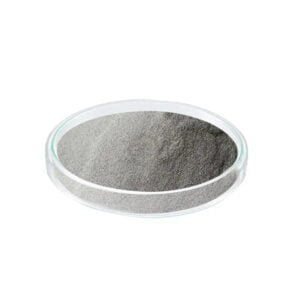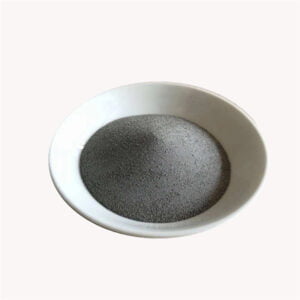Inconel 718 3D Baskı
İçindekiler
Genel Bakış
Inconel 718, gaz türbini bileşenleri, roket motorları ve nükleer reaktörler gibi aşırı sıcaklık uygulamaları için yaygın olarak kullanılan yüksek mukavemetli bir nikel-krom süper alaşımıdır. Mükemmel mekanik özelliklerin, korozyon direncini ve işlenebilirliğin birleşimi, Inconel 718'i havacılık, petrol ve gaz, enerji üretimi ve otomotiv gibi endüstrilerde çok yönlü bir malzeme haline getirmektedir.
Son yıllarda, Inconel 718'in katmanlı imalatı (AM), karmaşık, yüksek performanslı metal parçalar üretmek için dönüştürücü bir üretim yöntemi olarak ortaya çıkmıştır. 3D baskı olarak da bilinen AM, geleneksel işleme veya dökümün kısıtlamaları olmaksızın, 3D bir modelden doğrudan katman katman bileşenler oluşturur.
Bu kılavuz, derinlemesine bir bakış sunmaktadır. Inconel 718 3D baskı, alaşım özellikleri, popüler AM işlem türleri, parametreler, mikro yapılar, mekanik davranış, son işlem, uygulamalar ve tedarikçiler dahil. Mühendislerin, tasarımcıların ve teknik program yöneticilerinin Inconel 718 3D baskıyı uygulamalarına ve basılı parçaları üretim kullanımı için nitelendirmelerine yardımcı olmayı amaçlamaktadır.
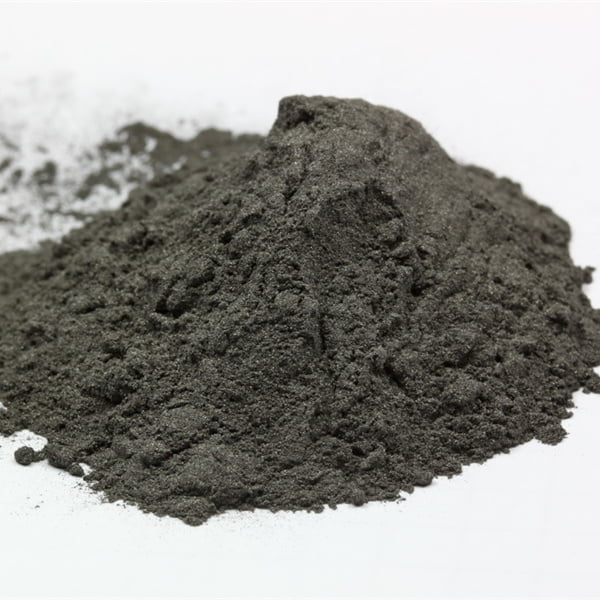
Inconel 718 Alaşımına Genel Bakış
Inconel 718, niyobyum, molibden, alüminyum ve titanyum gibi önemli alaşım elementleri içeren, çökeltmeyle sertleştirilmiş bir nikel-krom alaşımıdır.
Inconel 718 Bileşimi
| Element | Ağırlık % | Amaç |
|---|---|---|
| Nikel | 50-55% | Korozyon direnci, süneklik |
| Krom | 17-21% | Oksidasyon direnci |
| Demir | Denge | Maliyet etkinliği |
| Niyobyum | 4.75-5.5% | Yağış güçleniyor |
| Molibden | 2.8-3.3% | Katı çözelti güçlendirme |
Nikel ve krom, korozyon direnci ve yüksek sıcaklık kararlılığı sağlar. Niyobyum ve molibden gibi sertleştirme elementleri, çökeltme ve katı çözelti sertleştirme mekanizmaları yoluyla üstün mukavemet sağlar.
Inconel 718 Özellikleri
- 700°C'ye kadar mükemmel dayanım
- Yüksek darbe tokluğu ve yorulma direnci
- İyi oksidasyon ve korozyon direnci
- Yüksek sürünme kopma mukavemeti
- Standart tekniklerle kolayca şekillendirilir ve kaynak yapılır
- 8,19 g/cm3 yoğunluk
Bu özelliklerin kombinasyonu, Inconel 718'i çeliklerin ve alüminyum alaşımlarının yeteneklerinin ötesinde aşırı ortamlar için uygun hale getirir.
Inconel 718 3D Baskı Süreçler
Birkaç katmanlı imalat süreci, Inconel 718 ile başarı göstermiştir ve üretim uygulamaları için giderek artan bir şekilde benimsenmektedir:
Inconel 718 için Popüler AM İşlemleri
| Süreç | Açıklama | Yoğunluk | Mikroyapı | Mekanik Özellikler |
|---|---|---|---|---|
| Lazer Toz Yatağı Füzyonu (L-PBF) | Lazer, toz katmanlarını eritir | 99.5%+ | Sütun taneleri, biraz gözeneklilik | İşlenmiş aralıkta çekme mukavemeti |
| Elektron Işını Toz Yatağı Füzyonu (E-PBF) | Elektron ışını tozu eritir | 99.5%+ | Sütun taneleri, biraz gözeneklilik | İşlenmiş aralıkta çekme mukavemeti |
| Yönlendirilmiş Enerji Biriktirme (DED) | Odaklanmış ısı kaynağı, toz veya tel beslemesini eritir | 99% | Epitelyal taneler, biraz gözeneklilik | İşlem parametrelerine göre değişken |
| Binder Jetting | Sıvı bağlayıcı, toz parçacıklarını seçici olarak birleştirir | 60%+ | Gözenekli, infiltrasyon gerektirir | Basılı olduğu gibi düşük, infiltrasyon ile iyileşir |
L-PBF ve E-PBF, işlenmiş Inconel 718'e yaklaşan özelliklerle ,5'in üzerinde yoğunluklar elde edebilir. DED ve bağlayıcı püskürtme, tam yoğunluğa ulaşmak için son işlem gerektirir.
Her işlem, istenen mikro yapı ve özellikleri elde etmek için baskı parametrelerinin optimizasyonunu gerektirir.
Inconel 718 3D Baskı Parametreleri
Baskı parametreleri, basılı Inconel 718 parçaların ortaya çıkan mikro yapısını, kusurlarını ve mekanik performansını önemli ölçüde etkiler.
Temel Inconel 718 Baskı Parametreleri
| Parametre | Tipik Aralık | Etki |
|---|---|---|
| Katman kalınlığı | 20-100 μm | Yoğunluk, yüzey kalitesi |
| Lazer/ışın gücü | 100-500 W | Erime havuzu boyutu, ısıtma hızı |
| Tarama hızı | 100-1000 mm/s | Soğuma hızı, katılaşma |
| Kapak aralığı | 50-200 μm | Kapakçıklar arasındaki bağ |
| Işın odağı | 30-100 μm | Erime havuzu genişliği, derinliği |
| Toz boyutu | 10-45 μm | Toz akışkanlığı, yüzey kalitesi |
Daha ince katmanlar ve daha dar kapakçıklar yoğunluğu ve bağı artırır, ancak yapım hızlarını azaltır. Daha hızlı tarama daha ince taneler verir, ancak sıcak çatlamaya neden olabilir. Küçük toz boyutları yüzey kalitesini artırır.
Parametrelerin dikkatli bir şekilde optimizasyonu, tane yapısı mukavemetini, sünekliği, yüzey kalitesini ve baskı verimliliğini ayarlar.
Inconel 718 3D Baskı Mikro Yapıları
Inconel 718, AM işlemleri kullanılarak basıldığında çeşitli mikro yapılar sergiler:
Basılı Inconel 718'deki Mikro Yapısal Özellikler
- Yapı yönüne paralel sütun taneleri
- Ana plaka yönüyle eşleşen epitelyal taneler
- Tipik tane genişliği 100-400 μm
- Dendrit çekirdekleri ve interdendrit bölgeleri arasındaki katılaşma segregasyonu
- İşlenmiş ürüne kıyasla doku eksikliği
- γ” ve γ’ gibi sertleşme fazlarının çökmesi
- Eksik füzyondan kaynaklanan gözeneklilik ve mikro çatlaklar
Tane morfolojisi, baskı sırasında ısı akışını ve katılaşma modellerini takip eder. Ayrışma, çatlamaya neden olabilen kimyasal farklılıklara yol açar. Üniform, kontrollü bir mikro yapı elde etmek için dikkatli işlem gereklidir.
Isıl işlemler, elverişsiz fazları çözer ve optimum mukavemet için Ni3Nb gama-çift-asal gibi sertleşme çökeltilerini teşvik eder.
Basılı Inconel 718'in Özellikleri
AM işleme, uygun optimizasyon ile işlenmiş Inconel 718 ile karşılaştırılabilir mekanik özellikler elde edebilir:
Inconel 718 Mekanik Özellikleri
| Mülkiyet | Basıldığı Gibi | İşlenmiş Değirmen-Tavlanmış |
|---|---|---|
| Çekme Dayanımı | 1000-1300 MPa | 1000-1200 MPa |
| Akma Dayanımı | 500-1100 MPa | 500-900 MPa |
| Uzama | 10-35% | 20-35% |
| Yorulma Dayanımı | 100-600 MPa | 300-500 MPa |
| Sertlik | 25-50 HRC | 25-35 HRC |
Mukavemet, işlenmiş seviyeleri karşılar veya aşar, ancak uzama ve yorulma özellikleri daha düşük ve daha değişkendir.
Dikey ve yatay yapı yönleri arasında çekme anizotropisi gözlemlenir. Özellikler, kullanılan belirli AM işlem parametrelerinden büyük ölçüde etkilenir.
Basılı Inconel 718'in Son İşlemi
Yüzey kalitesini, boyutsal doğruluğu ve malzeme özelliklerini iyileştirmek için genellikle baskı sonrası işlemler gereklidir:
Yaygın Son İşlem Yöntemleri
- Isıl işlem – Optimum mikro yapı ve çökelti sertleşmesi geliştirir
- Sıcak izostatik presleme – İç boşlukları ve gözenekliliği kapatır
- Yüzey işleme – Kritik yüzeyler için yüzey pürüzlülüğünü azaltır
- Shot peening – Yorulma ömrünü iyileştirmek için sıkıştırma gerilmeleri indükler
- Kaplamalar – Gerekirse aşınma veya korozyon direnci sağlayın
Standart Inconel 718 yaşlanma sertleşmesi yaygın olarak kullanılır, ancak bazıları AM mikro yapıları için ısıl işlemi değiştirir. Yüzey kalitesi gereksinimlerinin katı olduğu yerlerde işleme, taşlama veya parlatma kullanılır.
Basılı Inconel 718'in Uygulamaları
Inconel 718 3D baskı için çok uygundur:
- Havacılık ve Uzay – Türbin bileşenleri, roket nozulları, motor tertibatları
- Enerji üretimi – Gaz türbini sıcak bölüm parçaları, nükleer yakıt kaplaması
- Otomotiv – Turboşarj tekerlekleri ve muhafazaları
- Petrokimya – Kuyu altı aletleri, vanalar, pompalar
- Uzay – Uydu ve fırlatma rampası bileşenleri
- Tıp – Diş implantları, cerrahi aletler
Geleneksel yöntemlere göre avantajları:
- Karmaşık geometriler için tasarım özgürlüğü
- Kafesler ve topoloji optimizasyonu yoluyla ağırlık azaltma
- Parça konsolidasyonu, azaltılmış montaj
- Talep üzerine üretim için daha kısa teslim süreleri
- Özelleştirilmiş şekiller, dijital olarak yönlendirilen envanterler
Sınırlamalar arasında, düşük üretim hacimleri için işlem maliyetleri ve düzenlenmiş endüstrilerdeki sertifikasyon zorlukları yer alır.
Basılı Inconel 718 Tedarikçileri
Birçok üretici dünya çapında Inconel 718 3D baskı hizmetleri sunmaktadır:
Hizmet Sağlayıcıları Seçin
| Şirket | AM Süreçleri | Ek Malzemeler | Üretim Kapasitesi |
|---|---|---|---|
| GE Katkı Maddesi | DED, Bağlayıcı Püskürtme | Titanyum alaşımları, çelikler, süper alaşımlar | Büyük hacimler |
| Materialise | Lazer PBF | Titanyum, alüminyum, çelikler | Orta hacimler |
| 3D Sistemler | Lazer PBF, Binder Jetting | Titanyum, paslanmaz çelik, CoCr, AlSi10Mg | Prototiplemeden orta hacimlere |
| Equispheres | Lazer PBF | Titanyum, çelikler, alüminyum | Küçük hacimler |
| Marangoz Katkısı | Lazer PBF, E-PBF | Titanyum, paslanmaz, takım çelikleri | Orta hacimler |
Hem büyük OEM'ler hem de niş AM hizmet büroları Inconel 718 baskısı sunmaktadır. Birçoğu ikincil son işlem operasyonları sağlar.
Parça maliyetleri, sipariş büyüklüğüne, kalite gereksinimlerine ve kullanılan işleme yöntemine bağlı olarak tahmini 100-500$/lb aralığındadır.
Basılı Inconel 718 Parçaların Nitelendirilmesi
Havacılık ve diğer düzenlemeye tabi uygulamalar için katı nitelendirme protokolleri geçerlidir:
- Baskı yönelimleri aralığında mekanik test
- Kompozisyon uygunluğu için kimyasal analiz
- Kusur tespiti için tahribatsız değerlendirme (NDE)
- Isıl işlem, sıcak izostatik presleme, işleme denemeleri yoluyla uzun süreli performans değerlendirmesi
- Süreç tekrarlanabilirlik değerlendirmeleri
- Parametre optimizasyonu, mikro yapılar, kusur önleme dokümantasyonu
Çekme çubukları, yorulma numuneleri ve malzeme kuponları gibi test eserleri, basılı özelliklerin karakterizasyonunu optimize eder.
İlgili endüstri spesifikasyonlarına uyulması, sertifikasyon ve üretim onayını destekler.
SSS
Inconel 718 yazdırmak için hangi partikül boyutu önerilir?
10-45 mikron toz tipiktir, daha ince ~15 mikron toz yoğunluğu ve yüzey kalitesini iyileştirir ancak akışı ve geri kazanımı tehlikeye atar.
Inconel 718 yazdırırken gözenekliliğe ne sebep olur?
Yetersiz erime, katmanlar arasında füzyon eksikliği ve hapsolmuş gaz boşluklara neden olur. Enerji girdisini, tarama desenlerini, katman kalınlığını ve gaz akışını optimize etmek gözenekliliği azaltır.
Basılı Inconel 718'in yorulma ömrünü hangi son işlem iyileştirir?
Bilyalı dövme, çatlak oluşumunu ve büyümesini engelleyen faydalı sıkıştırma gerilmeleri indükler. HIP ve işleme ayrıca yüzey gözeneklerini kapatarak yardımcı olur.
Basılı Inconel 718, döküm ve dövme 718 ile nasıl karşılaştırılır?
AM, dökme ve dövme malzemenin mekanik özelliklerine yaklaşır, ancak daha ince, daha ayrışmış bir mikro yapıya sahiptir. Isıl işlem, dövme ürüne benzer çökelti sertleşmesi elde edebilir.
3D baskı için Inconel 718'e bazı alternatifler nelerdir?
Kobalt krom, 625 ve 686 gibi nikel süper alaşımlar ve çökelti sertleşen paslanmaz çelikler benzer yüksek sıcaklık özellikleri sunar. Daha düşük yoğunluğun kritik olduğu yerlerde titanyum alaşımları mükemmeldir.
Inconel 718 ve paslanmaz çelik bimetal bir parça 3D yazdırabilir misiniz?
Evet, yönlendirilmiş enerji biriktirme, çok malzemeli bileşenler oluşturmak için hassas toz veya tel anahtarlaması yaparak farklı alaşımlar arasında geçiş yapabilir.
Sonuç
Özetle, Inconel 718 3D baskı, bu yüksek mukavemetli süper alaşımı kullanarak olağanüstü tasarım özgürlüğü ve performans iyileştirmeleri sağlar. Parça gereksinimlerini proses yetenekleriyle eşleştirmek ve baskı parametrelerini optimize etmek, geleneksel yöntemlere kıyasla faydaları kullanmanın anahtarıdır. Kalite, özellikler, çok malzemeli yapılar ve maliyetteki devam eden gelişmeler, Inconel 718 AM'nin zorlu endüstriyel uygulamalarda benimsenmesini genişletmeye devam ediyor.
daha fazla 3D baskı süreci öğrenin
Frequently Asked Questions (Advanced)
1) What parameter windows are a strong starting point for L-PBF of Inconel 718?
- Laser power 250–370 W, scan speed 800–1200 mm/s, hatch 0.09–0.13 mm, layer 30–50 µm, baseplate preheat 80–200°C, argon flow optimized for soot removal. Tune per machine/powder lot to reach ≥99.8% density pre-HIP.
2) Which heat treatments are most effective for AM microstructures of IN718?
- Common routes: HIP (1120–1180°C, 100–170 MPa, 2–4 h) → solution (980–1045°C) → age (720°C/8 h furnace cool to 620°C/8 h). Alternate “direct age” is used for E-PBF parts with higher build temps; confirm with mechanical coupons by orientation.
3) How do L-PBF and E-PBF compare for Inconel 718 3D printing?
- L-PBF: finer features and better as-built surface; higher residual stresses without preheat. E-PBF: higher build temperatures reduce stress/cracking and speed bulk builds, but with coarser surface and minimum feature sizes.
4) What are typical powder controls for flight-critical Inconel 718 AM?
- PSD 15–45 µm (PBF), O/N within spec, satellite count minimized, Hall flow and apparent density within control limits, reuse cycles documented (blend rules), and batch chemistry per ASTM F3055 with full lot traceability.
5) Can binder jetting produce production-grade IN718 parts?
- Yes, with optimized debind/sinter and HIP, ≥98–99% density is achievable. Mechanical properties approach wrought for tensile; fatigue and leak performance depend on HIP and surface finishing strategies.
2025 Industry Trends
- Certification acceleration: Wider adoption of AMS and ASTM material/process standards for IN718; digital build records and in-situ data increasingly required in aerospace PPAP/FAI packages.
- Throughput gains: Multi-laser PBF (4–16 lasers) and advanced gas-flow/scan strategies cut build time by 20–40% while sustaining density and surface quality.
- Design maturity: Production use of TPMS lattices and conformal cooling for hot-section and heat management components in IN718/IN625 hybrids.
- Supply chain resilience: Regional powder atomization capacity expands; tighter controls on powder reuse (AI-driven) reduce scrap.
- Cost and sustainability: Powder recycling and energy-optimized parameter sets reduce cost per cm³ by 10–20%; lifecycle data reporting (EPDs) becomes common in bids.
2025 Snapshot: Inconel 718 3D Printing Metrics
| Metrik | 2023 Baseline | 2025 Estimate | Notes/Source |
|---|---|---|---|
| Share of IN718 AM builds with in-situ monitoring | ~30% | 55–65% | Adoption in aerospace/energy |
| Avg. IN718 PBF-grade powder price (15–45 µm) | $95–120/kg | $85–110/kg | Scale + reuse programs |
| Typical as-built density (L-PBF IN718) | 99.5–99.8% | 99.7–99.9% | Gas flow + path optimization |
| Fatigue life gain with HIP + peen (R=0.1) | 1.5–3× | 2–5× | Post-processing optimization |
| Binder-jetted IN718 at ≥98% density (post-HIP) | Pilot | Early production | Heat exchangers/manifolds |
| Multi-laser average per new PBF install | 2-4 | 4–8 | Vendor shipments/roadmaps |
Selected references:
- ASTM International AM standards (e.g., F3055 IN718, F3302) — https://www.astm.org
- SAE AMS7000-series additive specs — https://www.sae.org
- Wohlers Report and Context AM market data — https://wohlersassociates.com | https://www.contextworld.com
- NIST AM Bench datasets — https://www.nist.gov/ambench
Latest Research Cases
Case Study 1: Flight-Ready IN718 Lattice Heat Exchanger via 4-Laser PBF (2025)
- Background: Aerospace thermal management required compact, corrosion-resistant cores with stringent leak limits.
- Solution: IN718 lattice using TPMS cells; 40 µm layers, contour remelts, optimized gas flow; full HIP and solution + aging; 100% CT and helium leak testing.
- Results: Mass −25% vs. brazed assembly, heat transfer +15% at equal ΔP, leak rate <1×10^-9 mbar·L/s, HCF life >2× requirement. Sources: ASME Turbo Expo 2025 proceedings; OEM technical paper.
Case Study 2: DED Repair of IN718 Turbine Nozzles with In-Situ Melt Pool Analytics (2024)
- Background: Replacement lead times and scrap were high for hot-section nozzles.
- Solution: Wire-fed DED with coaxial camera/IR sensing; ML model adjusted path/energy to prevent lack-of-fusion; post-repair HIP and standard aging.
- Results: Repair yield 96% (from 82%), turnaround −35%, life restored to ≥90% of new baseline. Sources: Journal of Manufacturing Processes 2024; OEM field data.
Uzman Görüşleri
- Dr. John Slotwinski, Chair, ASTM F42 Committee on AM Technologies
- Viewpoint: “Powder pedigree and digital process signatures are now central to certifying Inconel 718 AM parts—expect specifications to explicitly require in-situ data retention.”
- Dr. Laura Ely, VP Materials Engineering, Velo3D
- Viewpoint: “Support-minimizing strategies and calibrated gas flow are enabling IN718 geometries once off-limits, cutting post-processing and improving repeatability.”
- Prof. Ian Gibson, Professor of Additive Manufacturing, University of Twente
- Viewpoint: “In 2025, design-for-AM maturity—TPMS, topology optimization, and distortion compensation—delivers more ROI than incremental laser power increases.”
Practical Tools/Resources
- Standards and specs
- ASTM F3055 (IN718), F3302 (parameter control) — https://www.astm.org
- SAE AMS7000-series additive specs — https://www.sae.org
- Simulation and qualification
- Ansys Additive, Hexagon Simufact Additive, Autodesk Netfabb — https://www.ansys.com | https://www.hexagon.com | https://www.autodesk.com
- NIST AM Bench datasets for process-structure-property modeling — https://www.nist.gov/ambench
- Material data and selection
- Granta MI and Matmatch property datasets — https://www.grantami.com | https://matmatch.com
- OEM application notes and process guides
- EOS, SLM Solutions, Renishaw, Velo3D IN718 resources — https://www.eos.info | https://www.slm-solutions.com | https://www.renishaw.com | https://www.velo3d.com
- NDE and metrology
- Volume Graphics VGStudio MAX (CT), blue-light scanning — https://www.volumegraphics.com
Last updated: 2025-10-17
Changelog: Added advanced FAQ for Inconel 718 3D Printing, 2025 trends with a data table and references, two recent case studies, expert viewpoints, and curated tools/resources aligned to E-E-A-T
Next review date & triggers: 2026-04-30 or earlier if new AMS/ASTM specifications for IN718 AM are released, validated binder jetting workflows reach ≥99.5% density at scale, or powder pricing shifts >10% due to nickel market volatility
Paylaş
MET3DP Technology Co, LTD, merkezi Qingdao, Çin'de bulunan lider bir katmanlı üretim çözümleri sağlayıcısıdır. Şirketimiz, endüstriyel uygulamalar için 3D baskı ekipmanları ve yüksek performanslı metal tozları konusunda uzmanlaşmıştır.
İşletmeniz için en iyi fiyatı ve özelleştirilmiş Çözümü almak için sorgulayın!
İlgili Makaleler
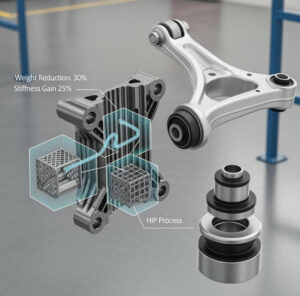
Metal 3D Printed Subframe Connection Mounts and Blocks for EV and Motorsport Chassis
Daha Fazla Oku "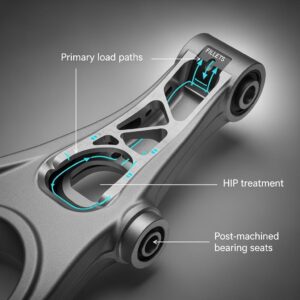
Metal 3D Printing for U.S. Automotive Lightweight Structural Brackets and Suspension Components
Daha Fazla Oku "Met3DP Hakkında
Son Güncelleme
Bizim Ürünümüz
BİZE ULAŞIN
Herhangi bir sorunuz var mı? Bize şimdi mesaj gönderin! Mesajınızı aldıktan sonra tüm ekibimizle talebinize hizmet edeceğiz.








